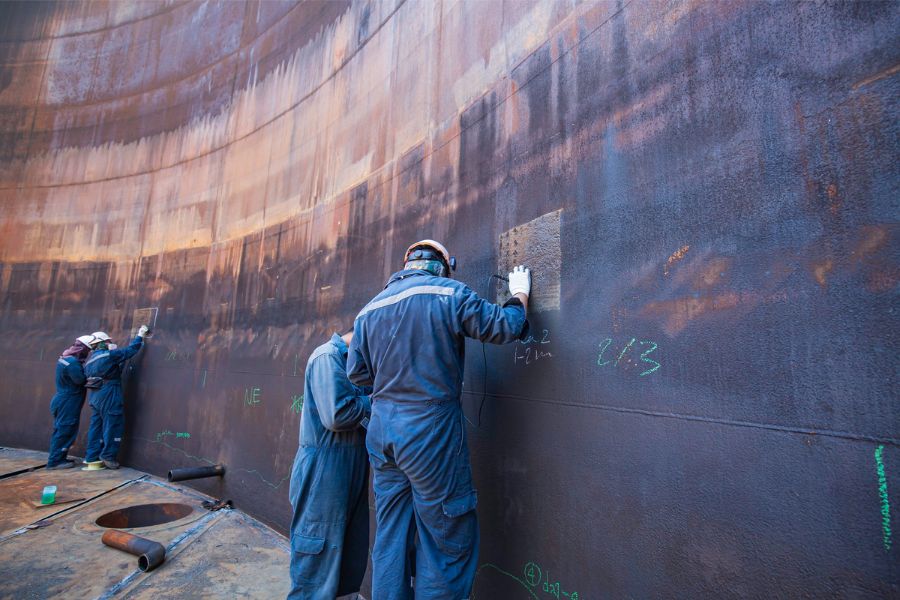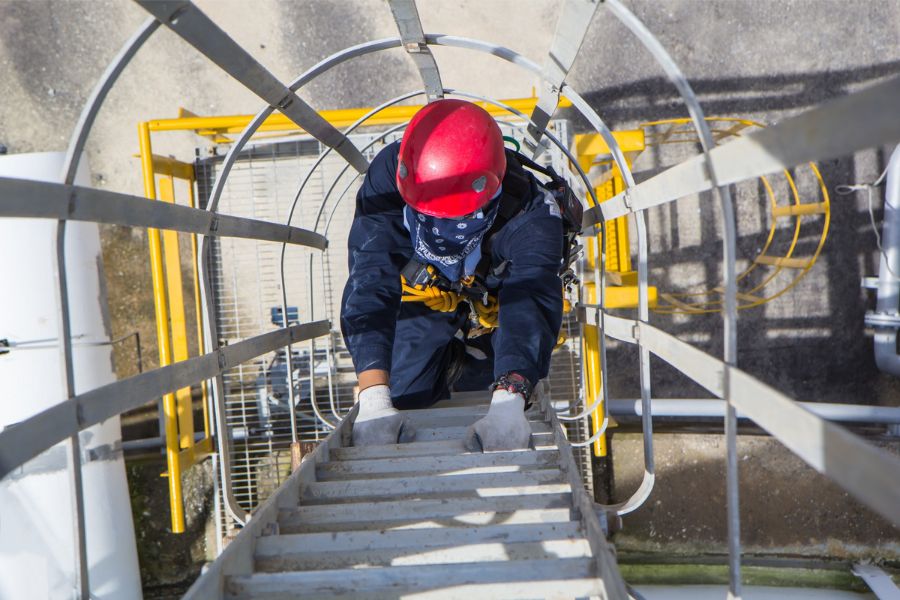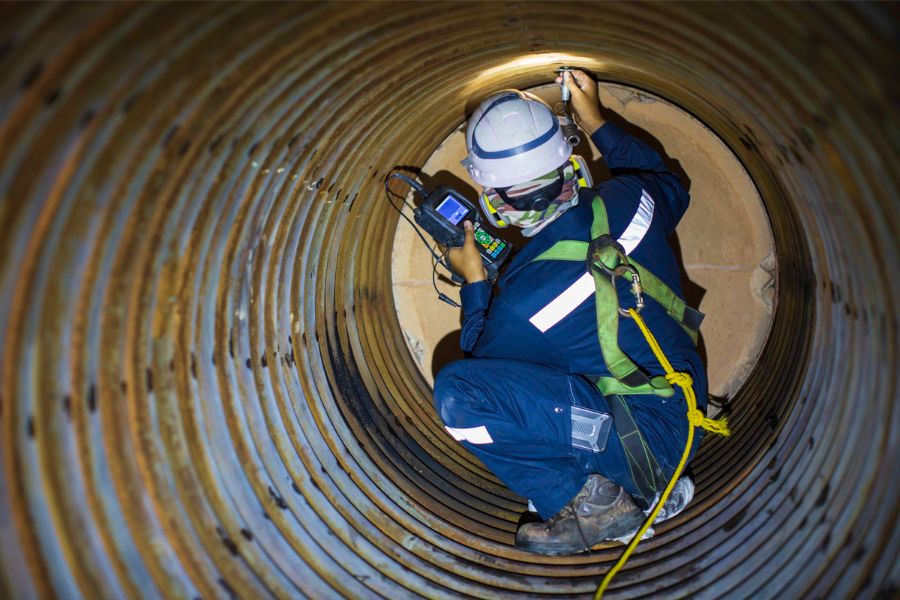Taking Your Cathodic Protection Program to the Next Level with Level 2 Certification
Introduction
Cathodic protection is a critical aspect of ensuring the longevity and integrity of metal structures, particularly in industries where corrosion poses a constant threat. As the demand for reliable infrastructure continues to grow, so does the need for advanced cathodic protection measures. One way to elevate your cathodic protection program is by achieving Level 2 certification. In this comprehensive guide, we will explore the fundamentals of cathodic protection, delve into the significance of Level 2 certification, outline its requirements, and provide insights into the preparation and examination processes. Additionally, we will discuss the advanced techniques associated with Level 2 certification, examine case studies of successful programs, and offer valuable resources for obtaining this certification.
Understanding Cathodic Protection
Cathodic protection is a corrosion control technique that prevents the deterioration of metal surfaces by making them the cathode of an electrochemical cell. This process involves the use of sacrificial anodes or impressed current to counteract the natural corrosion tendency of metals. Commonly used in industries such as oil and gas, water treatment, and marine structures, cathodic protection is essential for preserving infrastructure and preventing costly repairs or replacements.
Level 2 certification in cathodic protection signifies a higher level of expertise and competency in managing and implementing corrosion control measures. This certification is essential for professionals involved in designing, installing, and maintaining cathodic protection systems. It ensures that individuals possess a comprehensive understanding of advanced techniques, standards, and regulations associated with cathodic protection. Level 2 certification is particularly crucial for those responsible for managing complex systems or overseeing large-scale infrastructure projects, as it demonstrates a mastery of the field and a commitment to quality and safety standards.
The Importance of Level 2 Certification
Level 2 Certification in Cathodic Protection Program is a crucial step in enhancing the efficiency and effectiveness of corrosion prevention strategies. This certification signifies a higher level of expertise and competency in managing and implementing cathodic protection systems.
Key Aspects of Level 2 Certification:
1. Advanced Knowledge: Level 2 certification indicates a deeper understanding of cathodic protection principles, system design, and troubleshooting techniques. Professionals with Level 2 certification possess advanced knowledge, enabling them to address complex corrosion challenges.
2. System Design and Evaluation: Level 2-certified individuals are proficient in designing cathodic protection systems tailored to specific environments. They can evaluate existing systems, ensuring they meet industry standards and regulatory requirements.
3. Troubleshooting Skills: With Level 2 certification, professionals are equipped with the skills to identify and resolve issues within cathodic protection systems promptly. This includes diagnosing problems, optimizing system performance, and ensuring long-term effectiveness.
4. Compliance Assurance: Industries dealing with cathodic protection often face stringent regulations. Level 2 certification helps organizations demonstrate compliance with industry standards and regulatory requirements, fostering a culture of safety and environmental responsibility.
The Benefits of Level 2 Certification
Achieving Level 2 certification comes with a myriad of benefits. It not only enhances an individual’s professional credibility but also opens up new opportunities for career advancement. Employers often seek Level 2 certified professionals for roles that require a thorough understanding of cathodic protection systems, making it a valuable asset in competitive job markets. Additionally, Level 2 certification can lead to increased job responsibilities and higher earning potential.
Achieving Level 2 Certification in Cathodic Protection offers several significant benefits:
1. Enhanced Expertise: Level 2 certification indicates a deeper understanding of cathodic protection principles, allowing professionals to make informed decisions and recommendations for more complex systems.
2. Compliance and Quality Assurance: Certification ensures adherence to industry standards and regulations, promoting the implementation of effective cathodic protection programs that meet or exceed requirements.
3. Risk Mitigation: With advanced knowledge, certified individuals can identify and address potential issues proactively, reducing the risk of corrosion-related failures and minimizing the likelihood of expensive repairs or replacements.
4. Career Advancement: Level 2 certification is often a prerequisite for higher-level positions in the corrosion control field. It opens up opportunities for career growth and increased responsibilities within organizations.
5. Industry Recognition: Employers, clients, and regulatory bodies recognize Level 2 certification as a mark of proficiency, instilling confidence in the capabilities of certified professionals and the programs they manage.
Requirements for Level 2 Certification
Obtaining Level 2 certification involves meeting specific requirements. Typically, candidates must possess a certain level of education and professional experience in the field. Educational prerequisites may include a bachelor’s degree in engineering or a related field, while professional experience requirements often involve a minimum number of years working in cathodic protection. Fulfilling these prerequisites ensures that candidates have a solid foundation before advancing to the more complex aspects of Level 2 certification.
1. Education and Experience: To qualify for Level 2 Certification in Cathodic Protection, candidates typically need a certain level of education and relevant work experience in the field. This may include a degree in engineering or a related field and a minimum number of years working with cathodic protection systems.
2. Level 1 Certification: Often, Level 2 Certification requires prior attainment of Level 1 Certification. Level 1 Certification ensures that candidates have a fundamental understanding of cathodic protection principles and basic field techniques. It serves as a prerequisite for the more advanced Level 2 Certification.
3. Training Courses: Candidates may be required to complete specific training courses related to Level 2 Cathodic Protection. These courses could cover topics such as advanced monitoring techniques, data analysis, and troubleshooting complex cathodic protection systems.
4. Professional References: Some certification programs may require candidates to provide professional references attesting to their expertise and competence in the field. This helps ensure that candidates have practical experience and a positive professional reputation.
5. Code of Ethics: Adhering to a code of ethics is often a requirement for Level 2 Certification. This ensures that certified professionals maintain a high standard of conduct and professionalism in their work related to cathodic protection.
How to Prepare for Level 2 Certification
Preparing for Level 2 certification requires a combination of theoretical knowledge and practical experience. Candidates can enroll in specialized training programs that cover advanced topics in cathodic protection. These programs often include in-depth lectures, hands-on exercises, and case studies to provide a comprehensive understanding of Level 2 concepts. Additionally, self-study through relevant literature and industry publications is crucial for success in the certification process.
1. Review Certification Requirements: Carefully review the specific requirements for Level 2 Certification in the cathodic protection program. This includes educational prerequisites, work experience, and any additional criteria.
2. Advanced Training: Take advanced training courses or workshops that focus on the specific skills and knowledge areas covered in Level 2 Certification. This could include in-depth sessions on advanced monitoring equipment, data interpretation, and advanced troubleshooting.
3. Hands-On Experience: Gain practical, hands-on experience by working on complex cathodic protection projects. This experience is valuable not only for the certification process but also for developing a deeper understanding of real-world challenges in the field.
4. Study Materials: Utilize recommended study materials provided by the certification program or other reputable sources. This may include textbooks, reference guides, and practice exams to familiarize yourself with the content and format of the certification exam.
5. Networking: Connect with professionals who have already achieved Level 2 Certification. Networking provides opportunities to learn from experienced individuals, share insights, and possibly access mentorship or guidance during the preparation process.
The Level 2 Certification Exam
The Level 2 certification exam is a comprehensive assessment designed to evaluate candidates’ proficiency in advanced cathodic protection techniques. The exam may cover topics such as advanced corrosion theory, system design considerations, troubleshooting, and risk assessment. It is essential for candidates to thoroughly review the exam syllabus, practice with sample questions, and participate in mock exams to ensure readiness. The successful completion of the Level 2 certification exam marks a significant milestone in a professional’s career and validates their expertise in cathodic protection.
1. Exam Format: Understand the format of the Level 2 Certification exam, including the types of questions, time constraints, and any practical components. This information helps in structuring your study plan.
2. Key Exam Topics: Identify the key topics that the exam will cover, such as advanced cathodic protection principles, system troubleshooting, and data analysis. Focus your study efforts on these critical areas to maximize your chances of success.
3. Practice Exams: Take practice exams to simulate the exam environment and assess your readiness. This helps you become familiar with the types of questions you may encounter and allows you to identify areas where you need additional study.
4. Time Management: Develop effective time management strategies for the exam. Allocate specific time periods to each section, ensuring that you have sufficient time to address all questions. Practice pacing yourself during practice exams.
Advanced Cathodic Protection Techniques
Level 2 certification goes beyond the fundamentals of cathodic protection, delving into advanced techniques that enhance the effectiveness of corrosion control measures. These techniques may include specialized coatings, remote monitoring systems, and advanced survey methods. Professionals with Level 2 certification are equipped with the knowledge to assess complex corrosion scenarios and implement innovative solutions tailored to specific industry needs. Here are some advanced techniques that can enhance your cathodic protection program at this level:
1. Remote Monitoring and Control Systems: Implementing advanced systems that allow for remote monitoring and control of cathodic protection systems. This involves the use of sophisticated sensors, data loggers, and communication technologies to monitor the effectiveness of corrosion control measures in real-time.
2. Deep Cathodic Protection System Design: Level 2 certification involves a deeper understanding of designing cathodic protection systems for complex structures, such as those in challenging environments or with intricate geometries. This includes considering factors like soil resistivity, coating conditions, and current distribution.
3. AC Mitigation Techniques: Dealing with alternating current (AC) interference is a more advanced aspect of cathodic protection. Level 2 certification equips professionals with the knowledge to identify and mitigate AC interference through techniques such as installing interference mitigation devices or employing advanced coating systems.
4. Advanced Survey Techniques: Level 2 certified individuals are proficient in using advanced survey techniques, such as close-interval surveys and advanced potential measurements. These techniques provide a more detailed analysis of the cathodic protection system’s performance and allow for precise adjustments.
5. Failure Analysis and Troubleshooting: Understanding the root causes of cathodic protection system failures is crucial. Level 2 certification prepares individuals to conduct thorough failure analyses and troubleshoot issues effectively, ensuring the long-term integrity of structures.
Resources for Obtaining Level 2 Certification
For individuals aspiring to achieve Level 2 certification, a variety of resources are available to aid in the preparation process. Specialized training courses offered by reputable institutions, industry conferences, and workshops provide opportunities for learning from experts in the field. Additionally, reference materials, study guides, and online forums offer valuable insights and support for candidates seeking to enhance their understanding of cathodic protection at an advanced level.
1. Training Courses: Enroll in specialized training courses offered by recognized institutions and organizations in the field of corrosion and cathodic protection. These courses cover the advanced topics and skills necessary for Level 2 certification.
2. Certification Programs: Seek out certification programs specifically designed for cathodic protection professionals. These programs often include a combination of theoretical knowledge and practical skills assessments to ensure a well-rounded understanding of advanced cathodic protection techniques.
3. Industry Conferences and Workshops: Attend conferences, workshops, and seminars related to cathodic protection. These events provide opportunities to learn from industry experts, gain insights into the latest technologies, and network with professionals who have already achieved Level 2 certification.
4. Reference Materials and Standards: Utilize relevant industry standards, guidelines, and reference materials. These resources serve as a foundation for understanding the principles and practices of cathodic protection and are essential for exam preparation.
Conclusion
In conclusion, elevating your cathodic protection program to the next level through Level 2 certification is a strategic move that promises enhanced corrosion mitigation and long-term asset preservation. The emphasis on Cathodic Protection Program Level 2 signifies a commitment to advanced knowledge, skill acquisition, and proficiency in the intricate aspects of corrosion control. Achieving this certification not only demonstrates a dedication to industry standards but also ensures that your organization is equipped to tackle the evolving challenges in corrosion prevention.
Furthermore, for those seeking comprehensive training in Cathodic Protection Program Level 2, the Corcon Institute of Corrosion stands as a beacon of excellence. With a reputation for delivering cutting-edge courses and fostering expertise, the institute provides a pathway for professionals to gain the necessary skills and knowledge. By enrolling in courses offered by the Corcon Institute of Corrosion, individuals can take a proactive step towards strengthening their cathodic protection programs, ensuring the longevity and reliability of critical assets in the face of corrosion challenges. Embrace the opportunity to excel in corrosion control by unlocking the potential of Level 2 certification through the esteemed Corcon Institute of Corrosion.
Image Reference : Freepik
Disclaimer: All trademarks, logos, and brand names are the property of their respective owners. All company, product, and service names used in this website are for identification purposes only. Use of these names, trademarks, and brands does not imply endorsement.









